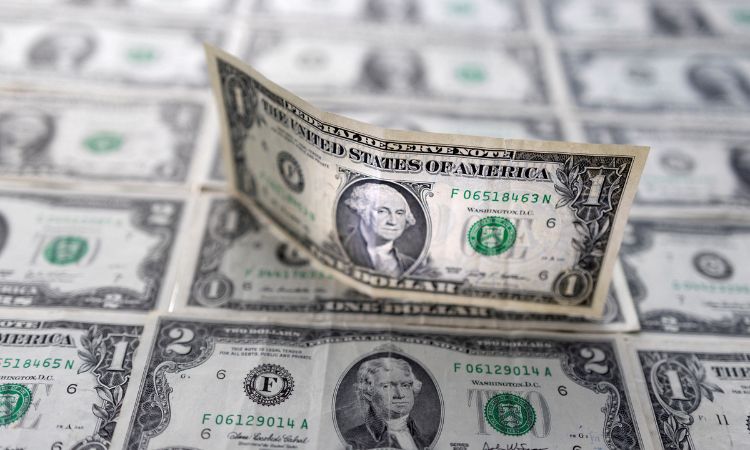The US dollar experienced increased pressure on Thursday as traders interpreted slower-than-expected US inflation as a sign that interest rate hikes by the US Federal Reserve would likely come to an end by the end of the month. The release of US data on Wednesday revealed a significant deceleration in inflation, leading to a substantial one-day sell-off of the dollar.
As a result, the dollar reached its lowest level in over a year against the euro and sterling, and its lowest point in over eight years against the Swiss franc. The diminishing expectations of further interest rate increases contributed to the narrowing gap between US borrowing rates and rates in other countries, prompting other currencies to strengthen against the dollar.

US Inflation Slows, Triggering Dollar Sell-Off:
The US data released on Wednesday showed a more pronounced deceleration in inflation than anticipated for the previous month. The surprising figures resulted in the largest one-day sell-off of the dollar in five months. The greenback reached its lowest level against the euro and sterling in over a year, and its lowest level against the Swiss franc in over eight years. Core inflation in the US stood at 0.2% in June, falling short of market expectations of 0.3%. Furthermore, the headline annual Consumer Price Index (CPI) dropped to 3%, declining from its peak of 9.6% one year earlier.
Diminishing Expectations of Future Interest Rate Increases:
Interest rate futures indicated that the markets have fully priced in another rate hike from the Federal Open Market Committee (FOMC) later in the month. However, expectations of any additional increases have significantly faded. Traders anticipate a possible end to US rate rises, leading to a narrowing gap between US borrowing rates and rates elsewhere. Consequently, the euro, sterling, and yen have strengthened against the dollar.
The Fate of the Dollar Depends on the FOMC:
Fiona Cincotta, a markets strategist at City Index, suggests that the future trajectory of the dollar remains uncertain for the remainder of the year. She emphasizes that the fate of the dollar and the tone for the summer will be determined by the upcoming FOMC meeting. Cincotta speculates that if the Federal Reserve expresses any dovishness, it will provide an excuse for dollar bears to continue pushing the currency lower. She also expresses skepticism regarding the Fed signaling that the July rate hike will be the last.
Euro’s Rally and Outlook:
Deutsche Bank’s George Saravelos suggests that it is time to buy the euro, following the release of inflation data. He targets a year-end forecast of $1.15 for the EUR/USD exchange rate but also sees the possibility of a range between $1.15 and $1.20 by the end of the year. The euro has not reached $1.20 since mid-2021.
Sterling’s Strengthening Position:
Sterling has experienced a 0.4% rise against the dollar, marking its sixth consecutive day of gains. Breaking above $1.30 for the first time since April of the previous year, the currency’s rise has been supported by data indicating that the UK’s economy contracted less than expected in May. This data reinforces the notion that the Bank of England can proceed with further interest rate hikes without jeopardizing growth.
Yen and Swiss Franc Gain Ground:
The yen has appreciated by 0.12% against the dollar, thanks in part to the declining US Treasury yields, which tend to correlate closely with the dollar/yen currency pair. Moreover, the Swiss franc traded at its strongest level against the dollar since the Swiss National Bank removed the peg on the domestic currency in early 2015.
Scandinavian Currencies on the Rise:
In Scandinavia, the Norwegian crown is heading for its largest weekly gain against the dollar this year, reaching five-month highs. The Swedish crown is also set to gain approximately 4% for the week and is currently trading around two-month highs. Inflation concerns and projections of further rate hikes by central banks in the region have bolstered these currencies.
Conclusion:
The US dollar faced downward pressure as slower US inflation led traders to believe that interest rate hikes by the US Federal Reserve would come to a halt. The narrowing gap between US borrowing rates and rates elsewhere prompted other currencies to strengthen against the dollar. The outcome of the upcoming FOMC meeting will play a crucial role in determining the future trajectory of the dollar. Meanwhile, the euro, sterling, yen, Swiss franc, and Scandinavian currencies have all experienced shifts in response to various economic factors and expectations.
Read More-Big US banks report largest jump since the pandemic in loan losses















